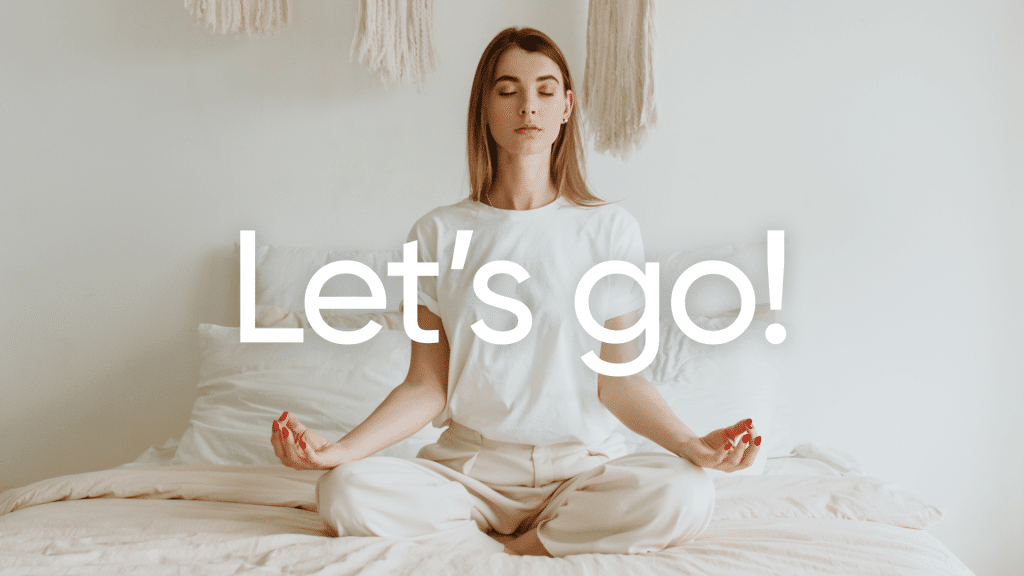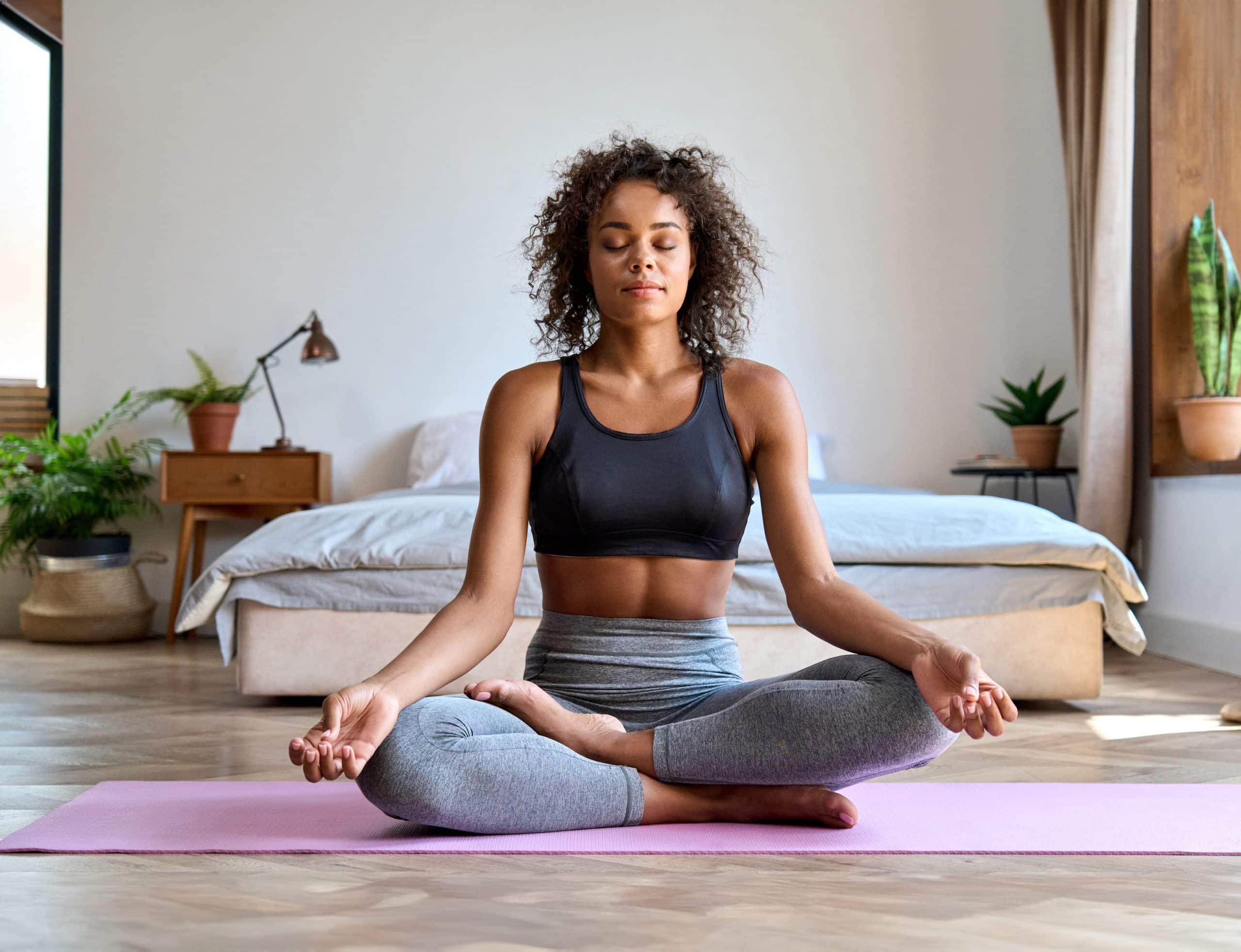Have you ever heard about standing meditation? For most people, the answer to this would be a quick no. If you were to ask someone how they meditate or how they think people practice meditation, you would most probably get two very common answers; sitting cross-legged on a comfortable surface or lying down on a bed, yoga, or exercise mat.
What Is Standing Meditation?
The answer is in the name. Instead of meditating while sitting or lying down, those who practice standing meditation choose to find their Zen while on their feet, standing still. While this practice may be new to those in the West, it has long been practiced by people and different cultures in the East.
An interesting fact about standing meditation is that, while it is also practiced in India, it is unlike other forms of this exercise, as it did not originate from this country. This form of meditation is believed to have originated from China, as some of its techniques like Qigong, Zhang Zhuang, Wuji, and Yiquan are quite popular in Chinese tradition (1). In yoga, the closest form of standing meditation posture is the Tadasana or ‘The Mountain pose.’
What Is The Posture For Standing Meditation?
While this practice is done while standing up, the different techniques all come with slightly different variations on how to properly do it. In light of this, before determining how to do a standing meditation, it is best to study and understand all techniques, and that way, you can choose the best one for you.
Read More: Meditation For Insomnia: Best Techniques To Ensure A Good Night’s Sleep
How To Do A Standing Meditation Using The Zhang Zhuang Technique?
The Zhang Zhuang standing meditation posture is believed to be the original technique and that all other postures are derived from it. This technique is also referred to as standing-like-a-tree, post-standing, pile-standing, standing-on-stake, or pylon-standing.
Here is how to properly do it (2):
- Start by standing with your feet shoulder-width apart, parallel to each other, and pointed straight ahead. Keep your toes slightly extended.
- Extend upward from the crown of your head into the sky. You want your head to feel as though it is effortlessly suspended above your spine and floating above your neck.
- To straighten your spine in the lower back region, roll your hips slightly forward as if you were sitting at the edge of a high barstool. This helps open the flow of energy within your body.
- Keep your knees slightly bent, ensuring that they do not go past your toes.
- Keep your shoulders relaxed. Don’t arch your back like in a military posture but instead, round your upper back to create a slight concave with your chest.
- Let your arms rest comfortably at your sides. Do not let them lie right up on your torso but instead, imagine a small pea-sized ball under each armpit to create a small space. Just keep your hands and arms relaxed and loose as they hang to your sides.
- Let the palms of your hands face toward your hips. They should not be touching your hips but instead should be hanging about two to three inches from them.
- Tuck your chin and roll it inward and up towards the top of your head, opening up the area where your spine meets your skull.
- Do not close your eyes. Keep them slightly open and gaze softly ahead.
- Your lips should be slightly parted, and your jaw relaxed, with your tongue placed gently on your palate.
- Breathe comfortably, slowly, and quietly through your nose. Feel your whole body relax deeper with every exhale.
- Once you feel comfortable in your stance, do a body scan. Start at the top of the head and scan your body downward. Notice any tension in your forehead, jaw, mouth, neck, shoulders, etc. When you locate an area of tension, breath into that area and allow the tension to dissolve and sink downward.
- Do this throughout your body, slowly releasing any hidden tension.
Standing Meditation Posture: Mountain Pose
Like the Zhang Zhuang technique, the mountain pose, aka Tadasana, is regarded as the foundation of all other standing yoga asanas (11).
- Start by standing tall with the bases of your big toes touching and your heels slightly apart.
- Engage the muscles on the front of your thighs, drawing them upward, causing your kneecaps to rise.
- Rotate both thighs inward, maintain the natural curves of your spine, and brace your core by pulling your navel toward your spine and back.
- Pull your shoulders up to your ears (in a shrug) and then roll them back to release your shoulder blades down your back.
- Let your arms hang naturally with the elbows slightly bent and the palms facing forward.
- Keep your neck long, do not tuck or lift your chin, the crown of your head towards the ceiling, your tongue at the floor of your mouth, and soften your eyes.
- Breath easily and stay in this position for 5 breaths, 30 seconds, or for a full minute.
Running a never-ending rat race, shoving trauma further and further away, falling into self-harming thought patterns, living life that’s eclipsed by constant anxiety and fear – this is what an average person goes through every day. Not addressing it will only pull you deeper into a downward spiral. BetterMe: Meditation & Sleep app will help you gain a new perspective on life and help you regain that long-lost internal balance!
Yiquan Standing Meditation Posture
Of all the standing meditation techniques, this may possibly be the hardest and the one that causes the most discomfort. Those who practice this stance believe in powering through the discomfort, not by clenching your teeth and bearing the strain, but by releasing the body into the posture with focus and purpose (1).
- Begin by standing with your feet shoulder-width apart and with the outside of the feet parallel.
- Lift your arms up and away from your body, keeping some space in your armpits. The arms may be lifted all the way to your chest or to just about the navel.
- The fingers of both hands should be facing each other while your tongue gently touches the roof of your mouth.
- Sit down on your tailbone with your knees slightly bent (like with the Zhan Zhuang posture, imagine sitting on a high bar stool).
- Keep your back straight, relax your shoulders out and down to the sides, and press up lightly with the crown of the head.
- To achieve standing meditation mindfulness in this position, align your body and breath. Breath deeply and freely without trying to control your breaths. Inhale as you feel your body expand, as you exhale, do it slowly and be in control. Imagine that you are letting air out of a balloon and feel your body contract with the exhale.
- Do this for two to three minutes each day and aim to get to a point where you can easily hold the position for up to 10 or 15 minutes a day.
Standing Meditation Before Or After Workout?
Trying to determine whether to do meditation before or after a workout can be confusing. Unless you are combining it with some yoga poses and movements to stretch the muscles, it could be quite confusing as to why you should include a meditation session in a workout routine.
The first thing to remember is that unlike a HIIT workout or a 30 to 45 minutes weight lifting session, the benefits of meditation are not often physical. Standing meditation and meditation, in general, is good for our mental and overall health. On the question of when the practice should be done before or after a workout, the answer is both.
The Standing Meditation Benefits
The standing meditation benefits before a workout include (3):
-
It Helps You Focus
Going into a workout routine without fully focusing on your actions may result in injury. Standing meditation helps you center your thoughts, allowing you to pay full attention to your workout session.
-
Helps With Control
When you combine standing meditation and body canning, it helps you take note of what areas of your body are experiencing tension, weakness, or pain. Taking note of such factors ensures that you have better control of your routine and body.
-
Lowers Stress Levels
Meditation is well-known for its benefits towards lowering stress, depression, and anxiety levels in people. Exercise does the same thing through the release of endorphins (aka the body’s happiness hormone).
Standing meditation can also be beneficial after a workout. It is a form of a cool-down that allows both your body and brain to relax from and acknowledge the taxing effort that you have put it through (6).
What Are Some Standing Meditation Benefits?
Whether you choose to meditate while sitting, standing, kneeling, or lying down, the overall benefits of this practice remain the same. They include:
-
Reduces Symptoms Of Stress And Depression
In 2013, a clinical psychology review of over 200 studies revealed that mindful meditation is an especially effective practice to help counter and reduce stress, anxiety, and depression (7).
-
Controls Anxiety
According to Harvard Medical School, this practice helps with distracting thoughts, something that plagues most people with anxiety. It enables them to distinguish between a problem-solving thought and a nagging worry that has no benefit (10).
Read More: Meditation and Stress: How Can Meditating Reduce Anxiety?
-
Improves Sleep
A 2015 study done on older adults showed that those who practiced standardized mindful awareness practices showed significant improvements in insomnia, depression symptoms, fatigue interference, and fatigue severity, as compared to those who practiced sleep hygiene education (8).
-
Helps Ease Symptoms Of Mental Disorders
A 2008 randomized controlled Dutch trial involving 17 university students revealed that meditation had a significant and large effect on OCD symptoms (13).
-
May Boost Your Immune System
While this fact requires more research, a 2016 review looking into the effects of meditation on circulating and stimulated inflammatory proteins, cellular transcription factors and gene expression, immune cell count, immune cell aging, as well as antibody response stated that meditation showed possible effects on specific markers of inflammation, cell‐mediated immunity, and biological aging (9).
Other benefits of meditation include promoting kindness and compassion towards yourself and others, increasing imagination and creativity, improving focus and attention, relieving headaches, and promoting mindfulness, among others (5).
With that being said, deep posture standing meditation seems to have a few more benefits than other positions used in this practice (12).
- It is a form of exercise. Since you have to be upright and in one position for a fairly long period of time, your standing meditation stance exacts some effort on your core and leg muscles.
- It is a good option for those who find sitting meditation uncomfortable.
- Improves posture and, when practiced regularly, can help reduce back pain (4).
- It can also relieve sciatica and reduce the effects of flat feet.
- It keeps you from dozing off. Falling asleep while meditating while sitting or lying down is quite common.
BetterMe: Meditation & Sleep app can help you transmute stress into serenity, pull you up from the doldrums, free your mind from the cares and worries of the world, quell racing thoughts and infuse you with tranquility! Start using it now and change your life!
Sleeping Instead Of Meditation
Since it can be hard to find a balance between meditation and complete relaxation, many people – beginners and experts alike – can be surprised to wake up and find that they took a quick power nap instead of meditating. Choosing to stand while meditating is a great way to prevent yourself from falling asleep.
Standing meditation is also said to help improve balance, bone density, power, awareness, body alignment, the efficiency of movements, and mind-body connection (14).
- It can be done anywhere. While all forms of this practice require a quiet place, standing meditation goes a step further in that it doesn’t require any additional tools. Sitting often requires a comfortable surface such as a chair, yoga mat, or meditation pillow, while lying down also requires a clean and comfortable area such as a mat or bed.
Meditation while upright is quite convenient as it requires no such tools. Whenever you feel overwhelmed – be it at work or during a family gathering-, all you require is a quiet spot away from people for you to practice the exercise and calm your frayed nerves.
Which Is More Effective Meditation While Sitting Or Standing?
Both postures offer the same benefits. However, if you are having a problem with staying awake or want to work on bettering your posture, then you should consider standing while meditating.
The Bottom Line
While standing meditation might not be a common practice as either sitting or lying down, it has the same if not more benefits than these two common techniques. If you are bored of the same meditation stance or postures or are finding it hard to meditate, take on the challenge of learning either of the above standing meditation postures.
While they may feel awkward and hard at first, with practice, you may find yourself standing still, meditating and letting awareness flow through you no matter where you are. Standing meditation mindfulness is a simple practice that is beneficial to everyone irrespective of age or experience.
DISCLAIMER:
This article is intended for general informational purposes only and does not address individual circumstances. It is not a substitute for professional advice or help and should not be relied on to make decisions of any kind. A licensed physician should be consulted for diagnosis and treatment of any medical conditions. Any action you take upon the information presented in this article is strictly at your own risk and responsibility!
SOURCES:
- Benefits of Tadasana, Zhan Zhuang and Other Standing Meditation Techniques (2019, researchgate.net)
- Cultivate Boundless Energy With An Ancient Standing Meditation Called Zhan Zhuang (n.d., scottjeffrey.com)
- How Meditating Beforehand Can Benefit Your Exercise (2019, livestrong.com)
- How to Do Mountain Pose in Yoga (2013, yogaoutlet.com)
- Meditation: A simple, fast way to reduce stress (2020, mayoclinic.org)
- Meditation Makes Exercise More Effective, Here’s How (n.d., aaptiv.com)
- Mindfulness-based therapy: A comprehensive meta-analysis (2013, sciencedirect.com)
- Mindfulness Meditation and Improvement in Sleep Quality and Daytime Impairment Among Older Adults With Sleep Disturbances (2015, ncbi.nlm.nih.gov)
- Mindfulness meditation and the immune system: a systematic review of randomized controlled trials (2016, pubmed.ncbi.nlm.nih.gov)
- Mindfulness meditation may ease anxiety, mental stress (2014, health.harvard.edu)
- Mountain Pose (2007, yogajournal.com)
- The 4 best meditation positions — and why your posture is important (2018, insider.com)
- The effects of a mindfulness intervention on obsessive-compulsive symptoms in a non-clinical student population (2008, pubmed.ncbi.nlm.nih.gov)
- The power of standing still (2010, psychologies.co.uk)




















